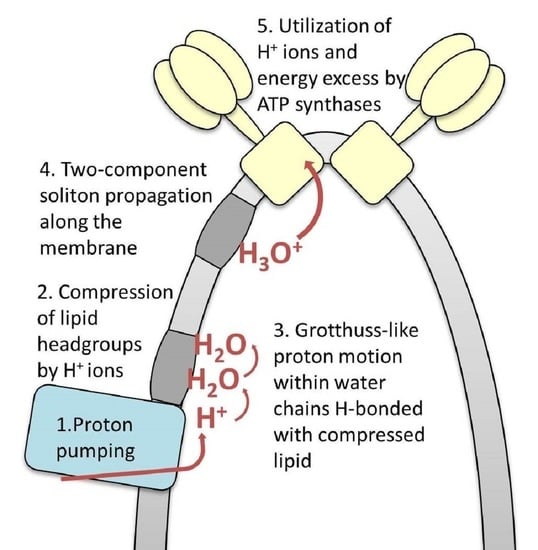Contribution of the Collective Excitations to the Coupled Proton and Energy Transport along Mitochondrial Cristae Membrane in Oxidative Phosphorylation System
Abstract
Share and Cite
Nesterov, S.V.; Yaguzhinsky, L.S.; Vasilov, R.G.; Kadantsev, V.N.; Goltsov, A.N. Contribution of the Collective Excitations to the Coupled Proton and Energy Transport along Mitochondrial Cristae Membrane in Oxidative Phosphorylation System. Entropy 2022, 24, 1813. https://doi.org/10.3390/e24121813
Nesterov SV, Yaguzhinsky LS, Vasilov RG, Kadantsev VN, Goltsov AN. Contribution of the Collective Excitations to the Coupled Proton and Energy Transport along Mitochondrial Cristae Membrane in Oxidative Phosphorylation System. Entropy. 2022; 24(12):1813. https://doi.org/10.3390/e24121813
Chicago/Turabian StyleNesterov, Semen V., Lev S. Yaguzhinsky, Raif G. Vasilov, Vasiliy N. Kadantsev, and Alexey N. Goltsov. 2022. "Contribution of the Collective Excitations to the Coupled Proton and Energy Transport along Mitochondrial Cristae Membrane in Oxidative Phosphorylation System" Entropy 24, no. 12: 1813. https://doi.org/10.3390/e24121813
APA StyleNesterov, S. V., Yaguzhinsky, L. S., Vasilov, R. G., Kadantsev, V. N., & Goltsov, A. N. (2022). Contribution of the Collective Excitations to the Coupled Proton and Energy Transport along Mitochondrial Cristae Membrane in Oxidative Phosphorylation System. Entropy, 24(12), 1813. https://doi.org/10.3390/e24121813






